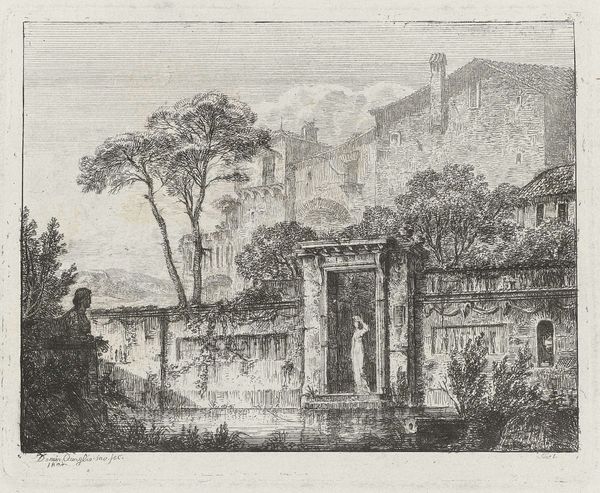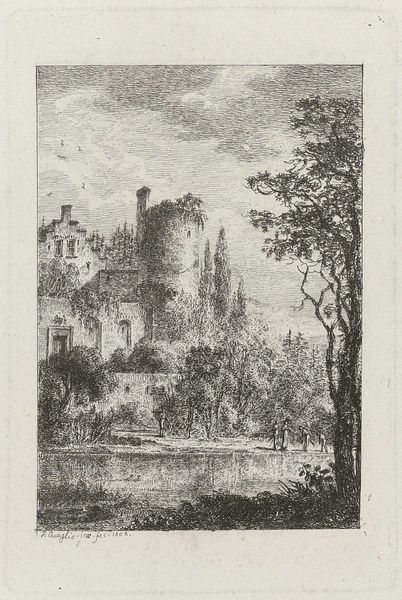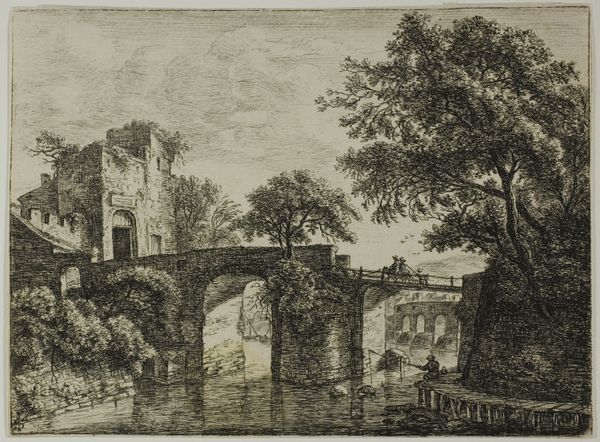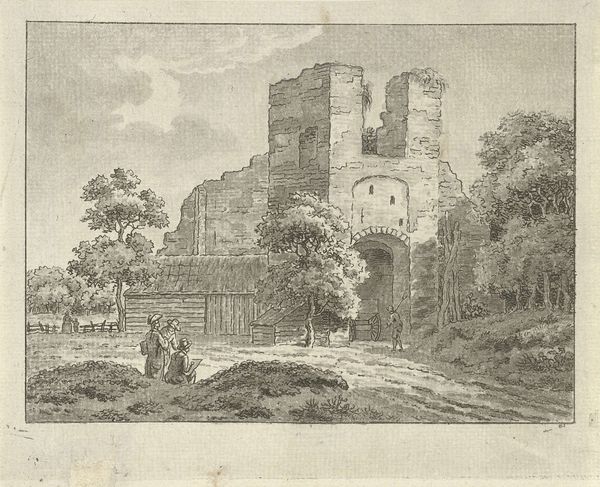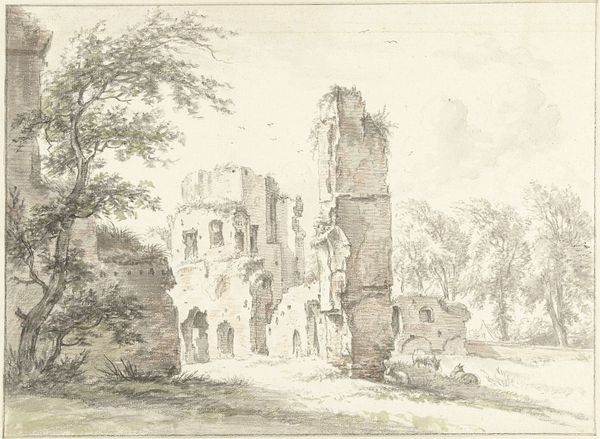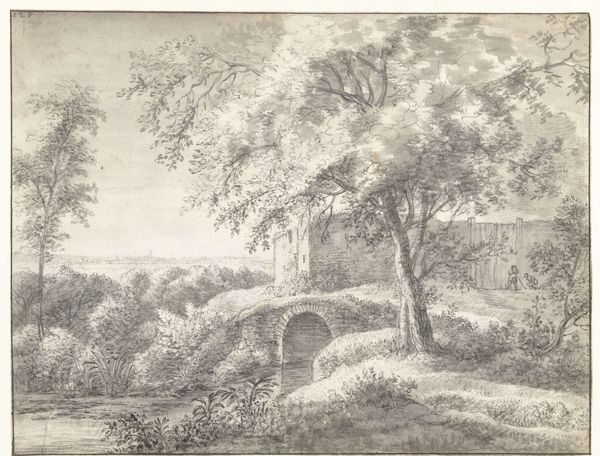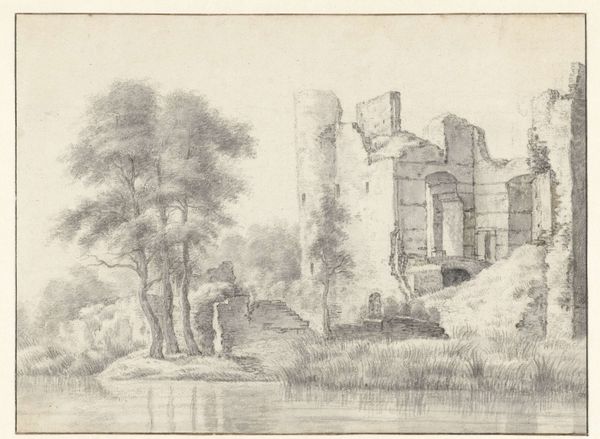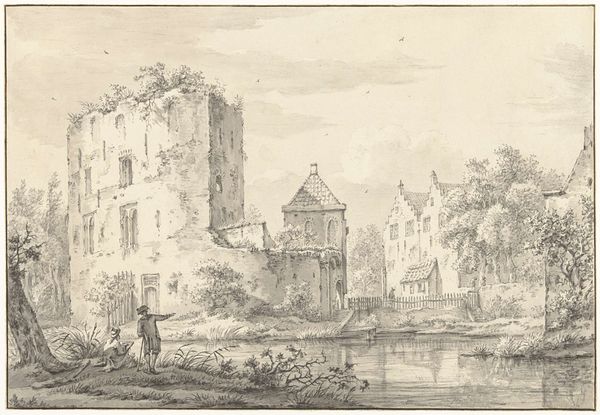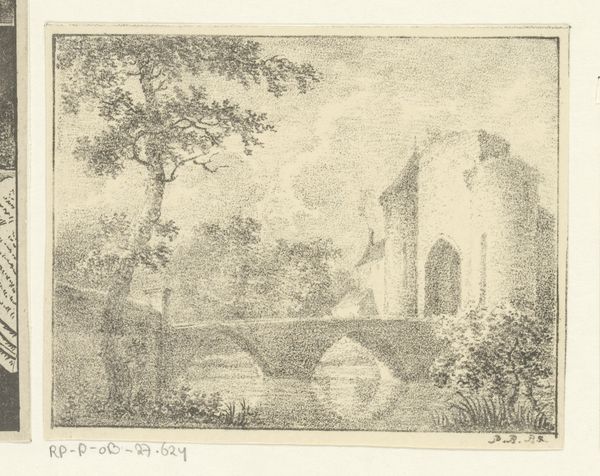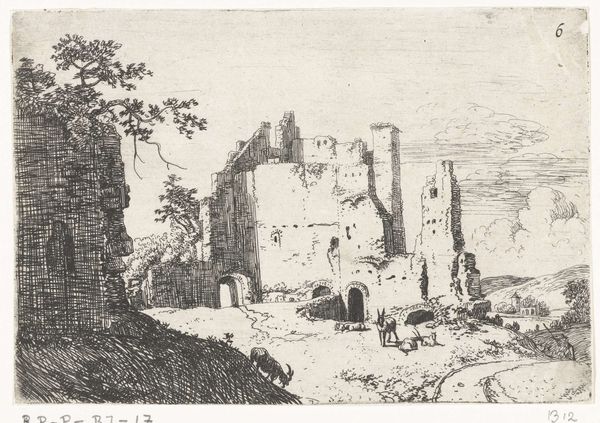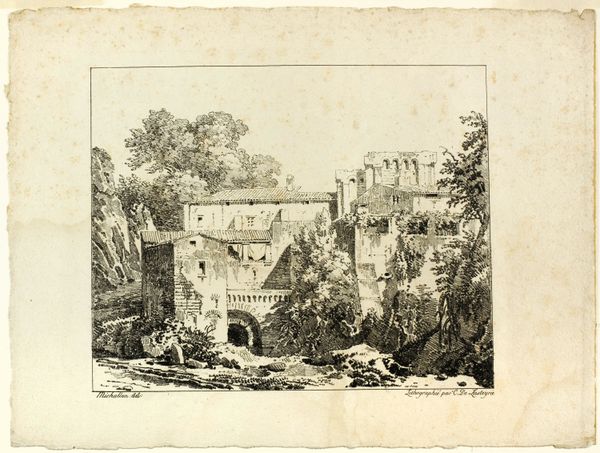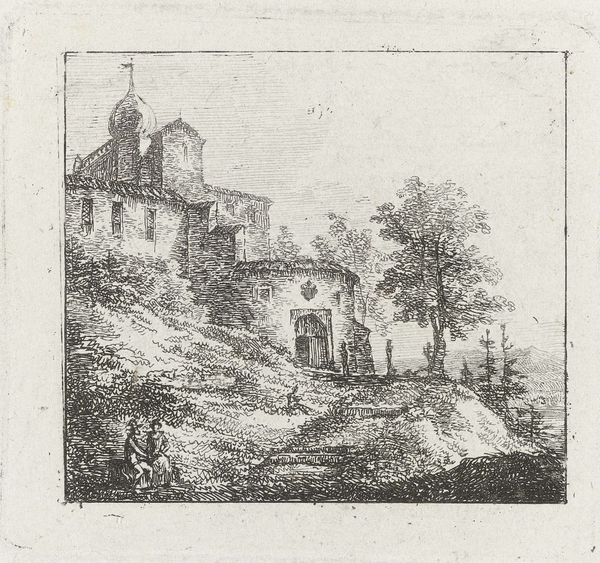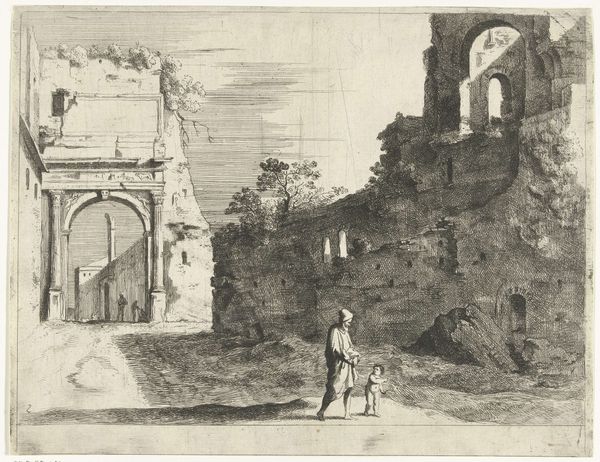
#
aged paper
#
light pencil work
#
pale colours
#
pencil sketch
#
light coloured
#
sketch book
#
incomplete sketchy
#
white palette
#
personal sketchbook
#
repetition of white colour
Dimensions: height 145 mm, width 198 mm
Copyright: Rijks Museum: Open Domain
Editor: This is "View of Buildings and Procession of Figures by a Gate," a pencil sketch by Domenico Quaglio, dating between 1806 and 1821. It's got a faded, almost ghostly quality. What strikes me is the contrast between the architectural detail and the hazy atmosphere. What do you see in this piece? Curator: Focusing purely on the visual, note the strategic use of hatching and cross-hatching to define form and texture. Observe how the artist directs the eye through the composition using lines, from the darker foreground elements to the lighter background. Consider the relationship between the built environment and the natural forms—how does Quaglio employ tonal variation to differentiate the two? Editor: The way he uses light and shadow, especially on the building on the left, makes it seem both solid and decaying at the same time. Almost romantic, even with just pencil. Is that intentional? Curator: Indeed. Look at how the controlled application of pencil creates a range of values which model forms and suggest a certain weight. Think about how those textural qualities influence the piece's emotional impact. Editor: I hadn't considered how much the texture itself contributes to the overall feel. I was so focused on what was being depicted. Curator: Precisely. It’s the formal elements, the lines and tones themselves, not merely the subject matter, that convey the essence of the piece. This rigorous arrangement guides how we experience the work. Editor: I see what you mean. It is amazing how much can be conveyed with subtle tonal arrangements and carefully rendered textures. Curator: Exactly. Examining how those formal qualities function allows us to have a rich experience of the artwork, without relying on outside factors or personal feeling.
Comments
No comments
Be the first to comment and join the conversation on the ultimate creative platform.
